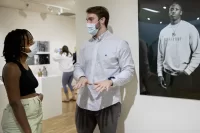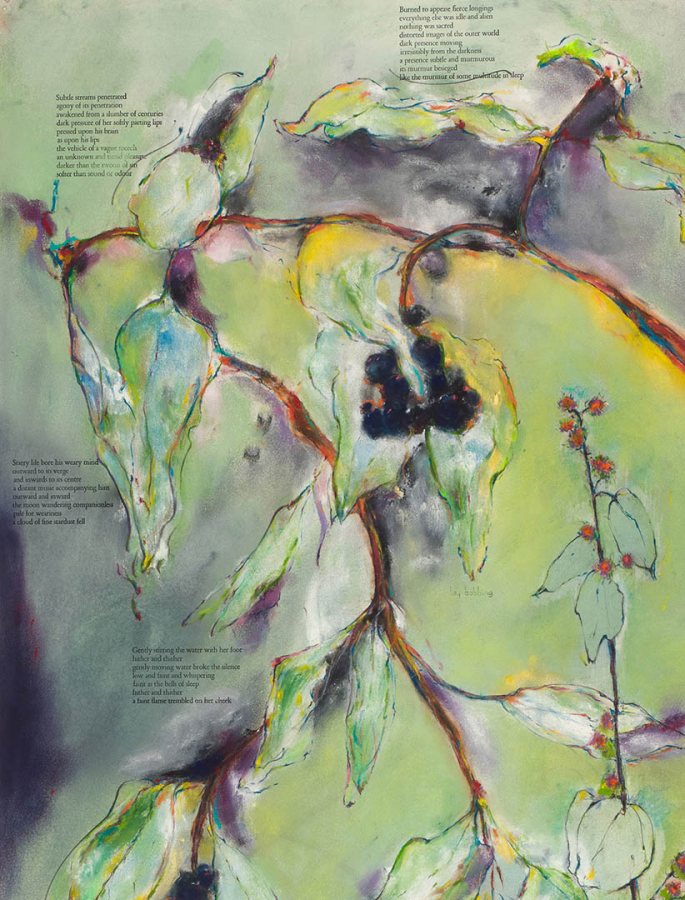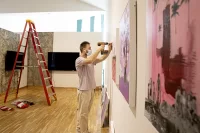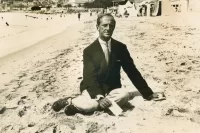
In museum show, Maine artist explores words in imagery
A Maine artist who uses diverse media to explore the use of language as a visual element, Greg Shattenberg shows prints and drawings in a Bates College Museum of Art exhibition that opens with a reception from 5 to 8 p.m. Friday, April 10, in the Olin Arts Center, 75 Russell St.
The museum and its events are open to the public at no cost. Museum hours are 10 a.m. to 5 p.m. Monday through Saturday, and until 7 p.m. Wednesdays during the academic year. For more information, please contact 207-786-6158 or museum@bates.edu.
Greg Shattenberg: Prints and Drawings is on view in the museum’s Synergy Space through May 30. Showing through the same period is the college’s annual Senior Exhibition, this year featuring art by 11 studio art majors working in photography, ceramics, painting, drawing and other media.
Shattenberg, of Auburn, is an accomplished printmaker who, over the years, has experimented with a wide variety of printing methods — from woodcut, etching and lithography to photographic processes such as collotype and color copy transfer. The Bates exhibition comprises works from the last 20 years that showcase his use of letterpress techniques to complement his images.
As a young artist studying painting and drawing, Shattenberg felt frustrated when he couldn’t realize his original ideas for images, and felt constrained by the conventional processes of image making. In response to these dissatisfactions, Shattenberg introduced writing into his drawings.
He recalls, “It was unsettling to look at the piece and realize the writing was more interesting than the drawing.”
In the process he has since developed, Shattenberg introduces text improvisationally after completing an image, building upon and adding to the context of the artwork. Through the careful selection of language, form and typeface, he explores the use of printed words and phrases as aesthetic elements as much as for their emotional or narrative contributions to his imagery.
He readily admits that combining language with imagery presents its own set of constraints. Language is inherently cerebral and its presence in Shattenberg’s images creates a tension with the visual sensuality of his drawings and prints.
“Images with language are an impossible fit,” he says. “They do not naturally go together and do not function singularly.” There’s also risk in printing text on top of artworks, because the wrong creative solution can ruin a carefully worked image.
For Shattenberg, however, the practice of layering text on top of imagery is a dynamic and revitalizing process in which the opportunities far outweigh the risks.





